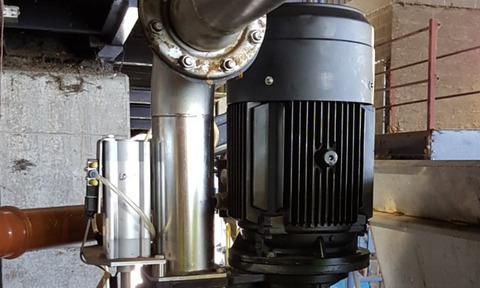How a traditional Scots industry is fuelling sustainability
4 Oct 2018

Salmon plays a vital role in the Outer Hebrides economy - now, thanks to help from Landia, so too does fish waste.
The Isle of Lewis is a bastion of tradition where at least half the population still speaks Scots Gaelic and where Sunday closing is rigorously observed.
Aquaculture production is an important industry for the Hebridean islands but is now contributing to sustainable fuel and energy through waste management.
And Comhairle nan Eilean Siar (CnES), the local authority for the Western Isles region, which includes the Outer Hebrides, has been enthusiastic about modernising and improving processes.
Close to the regional capital of Stornoway, on Lewis, is the Creed Integrated Waste Management Facility (IWMF). Since opening, this had grown to include a combined heat and power plant (CHP), electric boiler and thermal store, a wind turbine and a hydrogen system comprising electrolyser, storage and refuelling station, and a 960m3 anaerobic digester (AD) plant.
Unexploited waste
What it lacked, said council head of municipal services, David Macleod, was the capacity to make use of bulk fish waste.
Buying a good quality pasteuriser would enable Lewis to meet ABP (Animal By-Product) regulations, which require the waste to be treated for one hour at 70°C.
We always had very good support and technical back up – and we have the potential to take in more salmon waste in the future
Donnie MacMillan, plant manager, Creed IWMF
Plant manager Donnie MacMillan explained the decision to opt for pump experts Landia for advice:
“We spent a long time looking at different pasteurisers and had the benefit of seeing working sites where we were given warts and all about equipment performance, reliability of suppliers, back-up and importantly, lessons learned from mistakes made.”
Tight regulations demanded separation of what can be housed in so-called clean and dirty areas – “ rather ironic at a waste management facility,” acknowledges Macleod.
The site needed an ensiling tank, effectively as a buffer/pre-treatment tank, explained plant manager Donnie MacMillan. Landia chief, the late Hugh Vaughan - known for his willingness to get out in the field for a challenging job – came in person to help the project succeed.
Added Macmillan: “He was determined to make it work. With the space restrictions, Landia were able to provide a 10m3 unit, which sits just in front of the 8m3 pasteuriser. It was a very tight fit, but it worked.”
Quiet revolution
Landia assembled the units, tested every nut and bolt - and ran a trial process with water. The ensiling tank, pasteuriser and Landia personnel left its Shropshire base early on a Sunday morning – with installation on the Isle of Lewis commencing 24 hours later.
The ensiling tank was equipped with an 18.5kW stainless steel long shaft chopper pump, which recirculates and blends the salmon waste (mainly left-overs from the filleting process) into a smooth purée, before discharging it into the pasteuriser – fitted with Landia’s side-entry propeller mixer and dry-installed chopper pump. The one-hour (minimum) process at 70°C meets ABP (Animal By-Products) regulations, fully approved by vets.
The pasteurised fish waste – a 7 cubic ton batch per shift - is now integrated with household food waste and garden waste for Creed’s anaerobic digestion process, making a positive environmental and economic impact rather than sending to landfill or being transported off the island.
Meanwhile some electricity generated by the CHP is sent to a hydrogen system to produce hydrogen and oxygen, which is captured, compressed and delivered to a salmon hatchery.
“Landia actually have all the data on their system, so they can check on performance,” said Macmillan. “We received training and have always had very good support and technical back up – and we have the potential to take in more salmon waste in the future”.
Photo: The Landia ensiling tank is equipped with an 18.5kW stainless steel long shaft chopper pump

